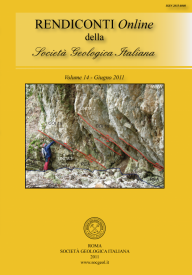
Associazioni a Foraminiferi nel sistema di stagni costieri di Oliveri-Tindari (Sicilia nordorientale)
Carmelo Saccà (*), Domenica Saccà (*), Preziosa Nucera (*), Anna de Fazio (*) & Salvatore Giacobbe (**)
(*) Dipartimento di Scienze della Terra, Università degli Studi di Messina, Salita Sperone 31, 98166 S. Agata di Messina (ME), Italia. E-mail: csacca@unime.it
(**) Dipartimento di Biologia Animale ed Ecologia Marina, Università di Messina, Viale F. Stagno d'Alcontres 31, 98166 S. Agata di Messina (ME), Italia.
DOI: https://doi.org/10.3301/ROL.2011.09
Volume: 14/2011
Pages: 3-10
Abstract
Foraminiferal assemblages in the coastal pools system from Oliveri-Tindari (North-eastern Sicily).
Benthic foraminiferal assemblages from the Oliveri-Tindari lagoon (Messina, Italy), located on the Tyrrhenian coast of Sicily, have been studied.
Results of grain size analyses showed that the silt fraction is predominant in almost all pools, except for the Marinello and Mergolo pools, whose sediment can be classified as silty clays.
Optical microscopy examination revealed that size fractions higher than 63µm include both terrigenous and biogenic components (mostly Foraminifera).
Based on micropaleontological study, the fauna consisted of 55 foraminiferal species belonging to 26 genera. The benthic foraminiferal assemblages included eurytherme and euryhaline taxa (Miliolids, Peneroplids and Ammonias), that are characteristic of sandy substratum and warm shallow waters or brackish environments. The foraminiferal assemblages also seemed to be diversified in relation to the grain-size.
An estimation of the species diversity was performed using different parameters.
Statistic diversity indexes showed that the two most ancient pools (Marinello and Mergolo) are considerably less rich in species than the other ones (Nuovo, Porto Vecchio, Fondo Porto, Verde). The observed stability of the foraminiferal assemblages confirmed they are reliable indicators of average environmental conditions of coastal ponds as highly dynamic environments, at least in the short-middle temporal scale.
Keywords
Get Full Text